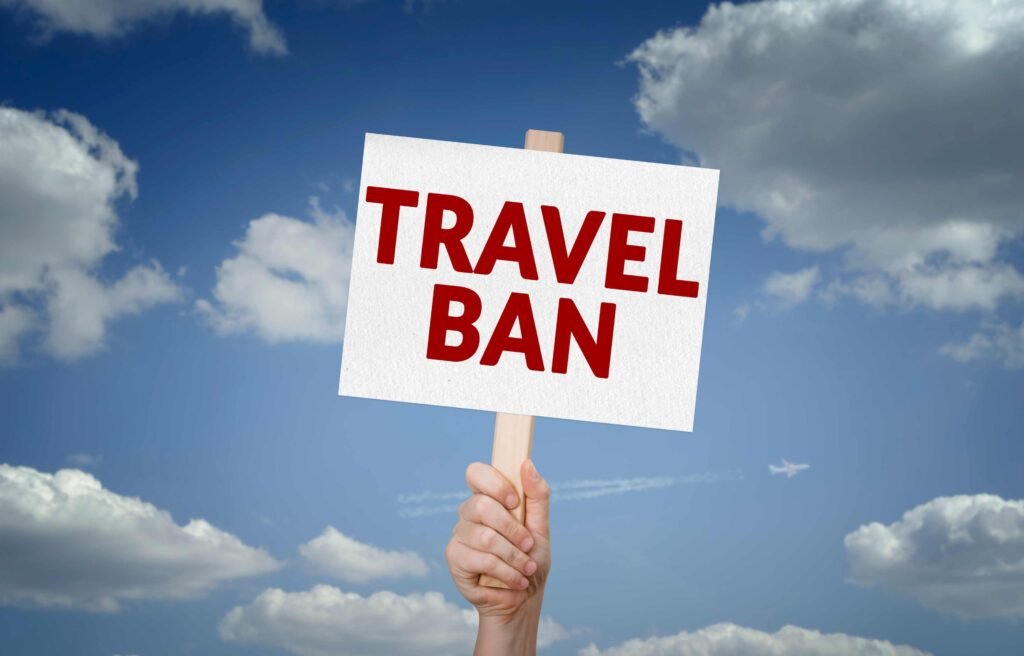The 12 countries ban refers to the U.S. government’s suspension of entry for nationals from twelve specific countries, citing national security, documentation deficiencies, and immigration enforcement failures. The policy was formally enacted through Presidential Proclamation 10782, which went into effect at 12:01 a.m. Eastern Time on June 9, 2025. It blocks both immigrant and non-immigrant visa issuance, including tourist, work, student, and family-related categories, for nationals from the listed countries.
This decision follows a multi-agency security review led by the Department of Homeland Security (DHS), in collaboration with the Department of State and the National Counterterrorism Center. Officials say the policy is rooted in public safety and the inability of certain nations to meet minimum standards for identity verification, deportation cooperation, and biometric data-sharing.
The 12 countries ban does not affect U.S. lawful permanent residents (green card holders), individuals who already hold valid U.S. visas, or dual citizens traveling on passports from non-barred countries. U.S. embassies in the affected regions have suspended most visa processing, while DHS has created a waiver process for certain humanitarian or national-interest cases.
The White House describes the ban as both temporary and conditional, with the possibility for countries to be removed if compliance improves.
Which Countries Are Included in the 12 Countries Ban?
The list of countries covered by the 12 countries ban includes a diverse set of nations, many of which are experiencing internal conflict, limited government capacity, or strained relations with the United States. The full list includes:
- Afghanistan
- Myanmar (Burma)
- Chad
- Republic of the Congo
- Equatorial Guinea
- Eritrea
- Haiti
- Iran
- Libya
- Somalia
- Sudan
- Yemen
Each of these countries was evaluated on the basis of several risk indicators. These included the presence or influence of extremist organizations, inconsistent or missing biometric databases, refusal to accept repatriated nationals, and forged or unreliable travel documents. In many cases, the U.S. noted an inability to validate traveler identities or criminal backgrounds due to broken or nonexistent state systems.
Officials say the inclusion of each country was based on empirical intelligence—not politics. For example, Iran has refused recent bilateral discussions over deportation protocol. Somalia lacks a fully functional national ID system. In the case of Haiti, explosive gang violence and widespread institutional collapse led to the conclusion that local authorities cannot reliably cooperate on immigration enforcement.
While the 12 countries ban is sweeping in scope, the White House maintains that it is subject to review and potential amendment. Compliance benchmarks, if met, could result in removal from the list.

Why Did the U.S. Decide to Enforce the 12 Countries Ban?
According to the Department of Homeland Security, the 12 countries ban is rooted in measurable risk. A classified review conducted in the final quarter of 2024 identified gaps in international cooperation on identity verification, visa screening, and document fraud prevention. The affected countries were those that, despite U.S. diplomatic efforts, failed to resolve these gaps over the course of several months.
Among the primary reasons cited:
- Absence of reliable criminal record databases
- Inability to share biometric data securely
- Non-compliance with U.S. deportation procedures
- Internal civil unrest or conflict compromising governance
- Document fraud including fake passports and entry permits
DHS sources told the press that in over 400 cases between 2022 and 2024, visa applicants from these 12 countries provided unverifiable documentation or withheld personal history. In several terrorism-related prosecutions, individuals from countries now on the banned list had entered the U.S. through weakened screening pipelines.
While critics argue that the 12 countries ban risks penalizing vulnerable populations, such as refugees or students, U.S. officials defend it as “a narrow policy response to specific systemic deficiencies.” The administration also stated that humanitarian pathways remain open for waiver review, though very few have been granted to date.
How Are Other Governments and Rights Groups Responding to the 12 Countries Ban?
The 12 countries ban has generated a significant international response. Several governments—most notably Iran, Eritrea, and Haiti—have issued formal diplomatic protests, calling the policy discriminatory and unjustified. The African Union published a statement urging the U.S. to reconsider, arguing that the decision may isolate developing nations already facing geopolitical strain.
On the domestic front, the American Civil Liberties Union (ACLU) and the National Immigration Law Center (NILC) filed early-stage lawsuits in federal court, asserting that the 12 countries ban is overly broad and violates principles of equal protection. Legal scholars have pointed out that similar bans in the past were overturned due to insufficient justification or unequal application.
Meanwhile, immigration advocates warn of practical consequences: halted family reunifications, interrupted academic plans, and humanitarian workers unable to travel. The International Rescue Committee (IRC) notes that many of the listed countries are source nations for displaced people and asylum seekers.
Despite this, some polls show that a slim majority of Americans support tighter vetting processes, particularly in an era of rising global migration. Political analysts expect the 12 countries ban to be a contentious issue in the 2026 midterm elections, where immigration policy is likely to remain a key debate.
What Comes Next for Countries Affected by the 12 Countries Ban?
The U.S. government has emphasized that the 12 countries ban is not intended to be permanent. Countries can be removed from the list if they take tangible steps to improve compliance with U.S. and international standards for identity verification, travel security, and deportation agreements.
To be considered for removal from the ban list, affected countries must:
- Accept and process U.S. deportation orders
- Implement or improve biometric identity systems
- Sign data-sharing agreements with U.S. agencies
- Reduce document fraud through passport and visa reform
- Engage in diplomatic consultation to review enforcement gaps
The Department of State has issued guidance to embassies in the affected regions outlining these criteria and establishing diplomatic channels to begin compliance talks. However, there is no formal deadline or timeline for review, and DHS will maintain discretion on case-by-case waivers during the interim period.
In the meantime, nationals from the barred countries can apply for limited exceptions under the “national interest” or “extreme hardship” clauses, though waivers have been granted in only a small percentage of applications. Until further notice, the 12 countries ban will remain in full effect.
U.S. lawmakers plan to hold oversight hearings later this month to evaluate both the scope and implementation of the ban, as well as any unintended humanitarian fallout.
Conclusion
The 12 countries ban reflects a heightened emphasis on international compliance and border integrity in a time of rising geopolitical complexity. While supporters frame the policy as a necessary defense mechanism, detractors caution that its real-world effects will fall hardest on ordinary people caught in administrative crossfire. As the global debate on secure yet humane migration policies intensifies, this ban may become a test case for how the United States balances sovereignty, safety, and its long-standing values.
Sources and References
- White House Presidential Proclamation 10782
https://www.whitehouse.gov/briefing-room/presidential-actions/ - Department of Homeland Security – Press Releases
https://www.dhs.gov/news-releases - U.S. Department of State – Visa Policy Updates
https://travel.state.gov/content/travel/en/us-visas.html - American Civil Liberties Union – Litigation Updates
https://www.aclu.org/issues/immigrants-rights - National Immigration Law Center – Policy Resources
https://www.nilc.org - African Union – Official Statements
https://au.int/en/pressreleases - Immigration and Nationality Act, Section 212(f)
https://www.law.cornell.edu/uscode/text/8/1182 - International Rescue Committee – Refugee Impact Reports
https://www.rescue.org





